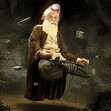Shahree Vyaas's Blog
November 28, 2025
The Maharajagar: an algebraic system concept turned into a novel
As a cryptomathician I’ve tortured my mind how I could turn a mythic system into a novel. The Maharajagar is the distillation of this process. The novel is written in the language of shrines, artifacts, and the shifting balance between chaos and memory. At its center is the Qi’tet, a group of protagonists whose arcs can be read as variables in a recursive equation, each drawn into a struggle where domains interlace and outcomes spiral rather than resolve.
The protagonists—Alec, Minik, Wen, Mahmoud, and Sheeva—emerge first as distinct functions. Alec’s path integrates chaos into continuity; Minik anchors with gravitas and resonance; Wen strips illusions, discerning truth from noise; Mahmoud channels ancestral recursion, translating myth into pattern; and Sheeva, a stabilizer, measures change and keeps the balance. Together they confront not just external forces but the algebra of reality itself, where every action folds back into the Mandala.
Artifacts act as global constants, appearing early as enigmas and only gradually revealing their systemic role. The Cintamani, encountered as a luminous stone of shifting brilliance, is first taken for a simple power dynamo. But as the group journeys further, it reveals itself as a global chaos attractor, a kernel that both destabilizes and illuminates. Its presence causes shrines to fluctuate, pushing each domain—Materium, Labyrinth, Dream Web, and Void—toward thresholds of collapse. To touch the Cintamani is to risk unbinding memory itself, yet it is also the only way to perceive the equations that underpin the world.
In parallel, the Phoenix Crown manifests in the early stages not as a crown at all but as the recurring vision of a Firebird. This bird of flame crosses dreams, rituals, and landscapes in the first three parts, its universal significance overlooked by the protagonists. They see it as omen, protector, or passing marvel, but not as a global unifying emblem. Only later do they understand that the Firebird is the Phoenix Crown itself, a stabilizer of shrines and restorer of Memory against Chaos. As the chaos attractor destabilizes, the firebird-crown re-anchors, showing that every system of collapse holds its renewal in potential.
These artifacts weave directly into the shrines, which serve as nodal invariants across domains. The Earth shrine grounds continuity; Water flows with ancestral memory; Fire burns as trial and rebirth; Air circulates thought and connection; Ether binds what otherwise dissolves. The Cintamani excites them into crisis, while the Phoenix Crown restores their balance. Each protagonist aligns with a shrine: Mahmoud with Earth and ancestral rituals, Sheeva with Water’s stabilizing flow, Wen with Ether’s clarity, Minik with Fire’s gravitas, and Alec with Air’s spiraling integration.
Among these forces, Goorialla, the Rainbow Serpent, coils as both guardian and test. It represents the Dreaming continuity that underlies all shrines, the current that cannot be reduced to equations yet sustains them. To meet Goorialla is to recognize that memory is not only human but planetary, that shrines are not inert structures but expressions of an ongoing Dreaming. Where the Cintamani destabilizes and the Phoenix Crown restores, Goorialla remembers, ensuring that even the Spiral remains tethered to deeper songlines.
Opposite the Qi’tet stands Long Feng, Wen’s cousin and the inversion of the system. Where the Qi’tet integrates, Long Feng fragments; where the Firebird signals rebirth, he seeks dissolution. He is the negative solution, a reminder that every system carries its own inversion.
As other figures enter—the twins Absalom and Esther, who begin as paired vectors before diverging; Chanelle, the healer; R’luh the cryptomancer, Merlin and Glaucus the prophetic dreamers; and Quaie Bock, the corrective constant—they reinforce that this is not a story of linear victory, but of spirals. Artifacts, shrines, protagonists, and dreaming beings interact as terms in an open equation, always recalibrating.
In the end, The Maharajagar is less a closed tale than a proof in motion: chaos as input, memory as transformation, shrines as invariants, and continuity as the Spiral’s emergent solution.
Print length 588 pages Publication dateOctober 24 , 2025 File size24.2 MB
Paperback
$39.00
New from $39.00
Print length 588 pages Publisher Bostoen, Copeland & Day Publication date October 24, 2025 Dimensions8.5 x 1.19 x 11 inches ISBN-13978-1806050796
The MaharajagarPaperback
$39.00
New from $39.00
Print length 587 pages Publication date October 24, 2025 Dimensions8.5 x 1.33 x 11 inches ISBN-13979-8297178304
November 27, 2025
Toward a Standard Literary Model
This post proposes a speculative yet disciplined framework for reimagining world literature: the Standard Literary Model (SLM). Inspired by the elegance of the Standard Model of particle physics, the SLM treats stories not as static cultural objects but as fields, forces, and interacting particles within a vast narrative cosmos.
The goal is not to collapse literature into science, nor to pretend that novels obey quantum laws. Instead, the SLM uses the mathematical imagination of physics as a lens through which literary structures, motifs, and transformations can be freshly perceived. Just as the Standard Model maps the subatomic architecture of reality, the SLM seeks to map the deep grammar of world literature, revealing patterns of voice, memory, form, and conflict that transcend geography and epoch.
“Literature”=∫(“Field”×”Voice”×”Memory”×”Form”×”Conflict”)” ” d”Culture”
This integral is not an equation but an aspiration:
a recognition that stories emerge from the continuous interaction of cultural fields and human energies.
I. The Physical Grammar: Borrowed Terms, Reimagined
To build this cosmology, we borrow—not literally, but metaphorically—the conceptual architecture of the Standard Model. All scientific terms are clearly marked as metaphor, never misused as fact. Their role is to provoke new questions, not to explain old ones away. This vocabulary allows literature to be imagined not as a static canon but as a dynamic interaction field, whose components collide, combine, decay, and regenerate.
II. Mapping Physics to Literary Function
Below is the core translation table, revised for clarity and aesthetic integration. It forms the backbone of the SLM method:
III. Method: How the SLM Reads Literature
Every close reading in this document employs the SLM metaphor to examine:
how characters carry charge or mass
how motifs act as carriers of thematic force
how plots undergo symmetry breaking
how genres mix like interacting fields
how cultural history exerts pressure on narrative curvature
Each analysis maintains a balance between rigor and imaginative speculation. The metaphors illuminate; they never replace.
IV. Example Application: The North American Literary Field
To illustrate the SLM in action, Section IV treats North American literature not as a chronological sequence but as a dynamic field system.
Foundational Field: Crevecoeur and early realist observers act as low-energy “seed particles” defining initial conditions.
19th-Century Expansions: The Knickerbocker School, Cooper, Bryant, and the rise of regional storytelling function as the first major field excitations.
Transcendental Symmetry Group: Emerson and Thoreau introduce a high-energy philosophical field redefining the system’s potential landscape.
SLM interpretation:
Realism, naturalism, protest literature, and regionalism emerge as phase transitions, driven by societal pressure and cultural temperature. Marginalized voices represent counter-fields, generating new symmetries and unsettling canonical mass distributions.
Modernism and the postwar era introduce quantum complexity—fragmented consciousness, narrative superposition, speculative realities. Science fiction becomes a laboratory for testing literary-field hypotheses.
North American literature, in this model, is a cosmic negotiation, constantly reinterpreting itself as new fields enter and new forces act upon it.
V. The Gains and Limits of the SLM
The SLM offers:
new analytic metaphors
tools for tracing deep structural resonance
a way to visualize literary history as an evolving cosmos
Yet it also demands caution. Metaphors illuminate, but they can distort when taken literally. The SLM’s value lies in imaginative precision, not scientific mimicry.
Ultimately, the SLM demonstrates that the humanities and the sciences, far from residing in separate universes, may share a profound affinity:
both seek the patterns that make meaning possible.
For further reading I refer to
The Standard Literary Model: Analyzing Major Works of World Literature Through the Metaphorical Lens of the Standard Model of Particle Physics.by Shaharee VyaasKindle eBook Submitted on November 19, 2025$3.00 USDView on Amazon ASIN: B0G2YTJK5YPaperback Submitted on November 20, 2025$9.99 USDView on Amazon ASIN: B0G31YM7GRNovember 26, 2025
The Birth of the Three Containments
Before the first migration, before form could travel,
the world turned inward.
Silence met its own reflection and folded —
and from that inward turning came the Three Containments, the primordial shapes that taught all things to know their edges.

I. The Caged Seed
Within the first containment rests the Seed of Stillness:
a perfect sphere bound by delicate bars of thought.
It breathes, though no air stirs it.
The cage is no prison, but a teacher —
whispering to the seed the memory of enclosure.
In time, its colors fade inward,
the living pattern becoming remembrance,
and remembrance becoming form.
“That which encloses learns its own name.”
Thus arises the first geometry —
potential circled by awareness,
form born from the echo of its own boundary.
II. The Egg of Opposite Fires
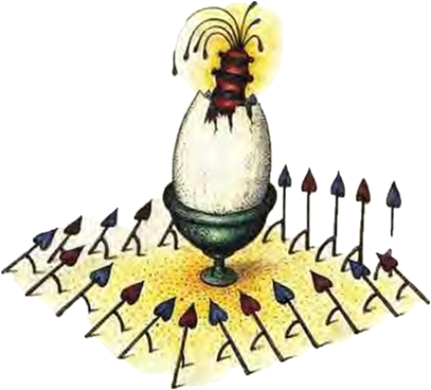
Upon a chalice of shimmering silence stands the second containment:
the Egg of Dual Flame.
Two arrows — one red, one blue — spiral round it,
thought and counter-thought locked in their slow orbit.
From its crown emerges the serpent of division,
ascending and descending in one breath,
yearning both for the sun and the abyss.
Here begins all striving:
heat and cold, love and refusal, ascent and descent.
Within this egg, every tension learns its mirror —
and in recognizing, breaks open.
“To open is to divide, and to divide is to see.”
III. The Coil of Retained Gold
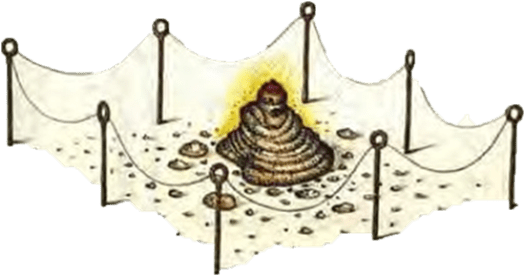
The third containment is the Coil of Fulfillment,
resting upon a bed of dust circled by sacred lines.
It does not grow — it gathers.
All that was scattered by the dual flames returns,
condensed into gold — the slowest and most patient of lights.
It hums with layered memory:
each transformation folded into the next
until rest itself begins to shine.
This is not wealth, but stillness perfected —
the dream of matter after long awakening.
“What was caged learns freedom;
what was split learns rest.”
Coda
From these three containments the world begins its movement:
first enclosed, then divided, then gathered again.
Every thought, every motion, every being
traces this silent pattern —
the seed, the flame, the coil.
And from these, the architectures of thought arise:
root, flight, and return.
November 25, 2025
The Windborne Carapaces.
When an idea leaves the waters of its origin,
it does not vanish — it takes on a shell.
Form hardens around motion; memory becomes structure.
These are the Windborne Carapaces —
living vehicles of meaning that drift between minds,
gliding through unseen currents of intention.
1. The Shell-Chariot

A creature of joyous velocity —
its gleaming carapace glows with the colors of early thought.
Two silver wheels of sinew spin at its rear,
whispering against the clay of unformed worlds.
It feeds upon laughter — that rarest wind —
converting delight into propulsion.
Philosophers say the first thinkers rode upon its back,
learning that movement itself could be an act of wonder.
2. The Spiral Glider

Unlike its kin, this being burrows through the air.
Its paper-thin wings, like illuminated scrolls,
unfold to grasp the invisible spirals of the sky.
At its tail, a drill hums softly —
a remembrance of the earth from which thought first rose.
Messengers of the Inner Gardens once cherished these forms,
for they could vanish into soil and reappear
where silence was needed most.
3. The Key Beetle
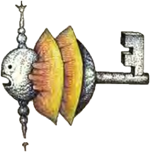
Said to unlock forgotten winds.
When its carapace parts,
it releases melodies once sealed by the world’s first architects.
Ancient builders carved doorways in its likeness,
believing that each passage contained a tune —
a sound meant to open not places, but understandings.
Yet when two Key Beetles meet,
their harmonies interlock and fall silent,
as if truth, when mirrored, must rest.
Thus, the journey of thought continues:
from the tree that bore the fruit of reflection,
to the sea that carried its seed afar,
and now to the air, where ideas don their luminous shells
and drift, whispering, through the wind.
November 24, 2025
The Migration of Ideas
When a thought has matured upon its tree,
it loosens from its branch —
not as a falling fruit,
but as a seed that remembers both root and wind.
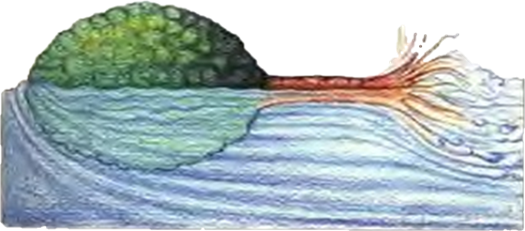
The Moment of Release
The fruit detaches. The current of imagination takes hold.
Behind it, a luminous trail — memory dissolving into motion.
Ideas, once bound to the soil of origin,
learn to travel across the fluid expanse of minds.
Some drift aimlessly, others follow unseen currents
toward distant shores of comprehension.

The Anatomy of Dispersal
Each branch becomes a vessel of transmission.
The seed, at its tip, carries the encoded pattern of all it once was and all it might become.
Thought, when released into the collective stream,
finds kinship with other ideas —
merging, splitting, evolving as it journeys.
The ocean of intellect has no fixed direction,
only tides of resonance and return.
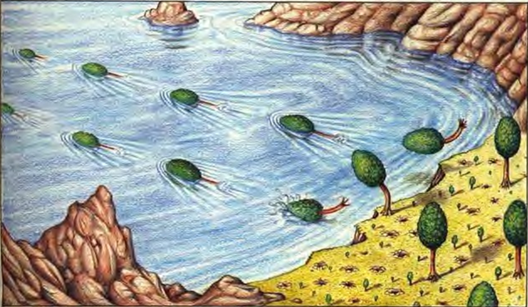
The Crossing of the Sea
Seeds of mind, carried by the current of exchange,
seek the fertile ground of another consciousness.
From these landings, new forests of thought arise.
And so the thinker, though rooted in solitude,
participates in a vast migration —
each idea, a vessel launched into mystery,
each listener, a shore.
November 23, 2025
The Growth of Understanding
At first, thought is like a tree —
rooted in silence, yet reaching toward light.
Its branches are questions,
its leaves, the countless moments of awareness
that breathe and fall in time.
Each fruit is a realization.
Some ripen and release themselves gently,
falling into the fertile soil of reflection;
others cling too long and wither in the grasp of certainty.

The Seed of Perception
A single thought arises; it seeks form, not yet name.
But when storms of doubt pass through,
branches break; leaves scatter.
Still, what remains unseen is the deeper geometry —
the roots learning the shape of endurance.
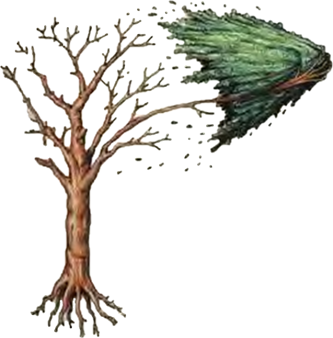
The Storm and the Empty Limb
The thinker faces loss; the old forms collapse.
Yet every fallen idea nourishes the soil below.
Even when cut to the trunk,
the essence does not die.
It waits — patient in the hidden spiral of its roots —
for the season of return.

The Trunk of Silence
What remains after learning and forgetting is stillness.
And from that silence,
a new understanding rises —
stronger, clearer, with branches that remember
the lessons of their former fall.

The Renewal of Mind
Rooted in humility, crowned in awareness.
The soil of experience becomes the foundation of wisdom.
So it is with the geometry of thought:
every idea is a seed,
every loss a pruning,
and every silence,
a beginning.
November 22, 2025
On the Circle, the Measure, and the Grid of Mind
In the silent discipline of form, thought first discovers its own edge.
A point extends into a line, a line closes into a circle —
and within that curve, the spirit recognizes itself.
Thus, in the beginning, there were three acts of mind:
Seeing, Shaping, and Knowing.
The teacher drew three circles upon the sand.
Each was the same in outline, yet none alike in motion.
One stood for the outer world of sense,
one for the inward world of reflection,
and the third —
for that which joins them: understanding.
○ ○ ○
Sense Mind Unity
He said: Measure not what the eye sees, but what the line intends.
For symmetry without meaning is vanity,
and meaning without measure, confusion.
When thought draws its circumference,
it both limits and reveals itself.
Below, the master placed a table of relations,
where number, proportion, and silence were given equal columns —
a square of intellect where opposites met:
He said:
“In this grid lies the balance of knowing —
for every form finds its rest not in itself,
but in the relation it bears to others.”
And so the pupil understood:
The geometry of thought is not drawn with ink,
but with attention.
Each figure, each fraction, is a mirror —
showing not what is outside,
but what the mind imagines to be within.
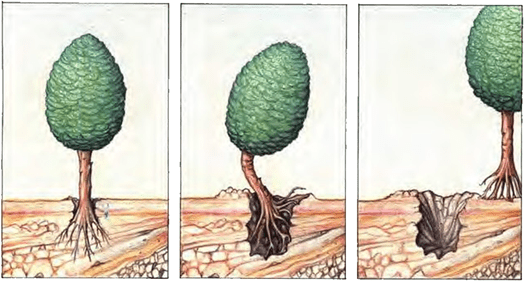
November 21, 2025
Closing Meditation
Imagine a single straight line —
a journey of purpose.
Now imagine a gentle curve —
a rhythm of grace.
Between the two
lies the way of truth:
steady yet kind,
measured yet alive.
To live with awareness
is to write this line daily —
not in ink,
but in the quiet measure of being.
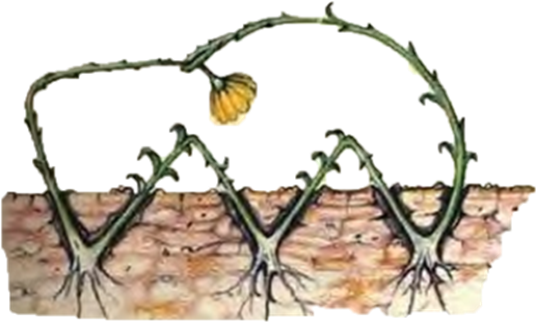
November 20, 2025
The Thread of Continuity
When we weave cloth,
each thread crosses another —
the warp and the weft.
One moves, one holds.
So it is with life:
our actions move,
our values hold.
Only together do they create
a fabric that endures.

November 19, 2025
The Law of Alternation
If all things only moved forward,
they would tear apart.
If all things only stopped,
they would decay.
The stars themselves swing
between light and shadow.
The heart, too, beats and rests.
The wise learn to work with calm hands
and to rest with clear minds.


